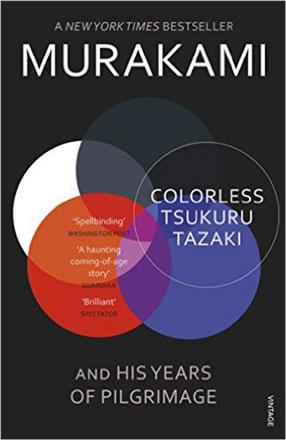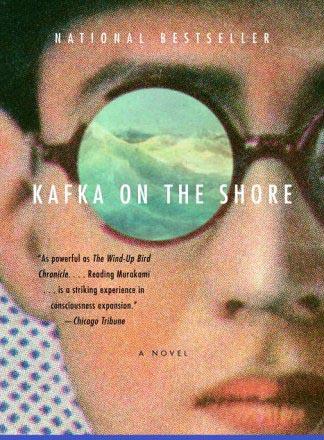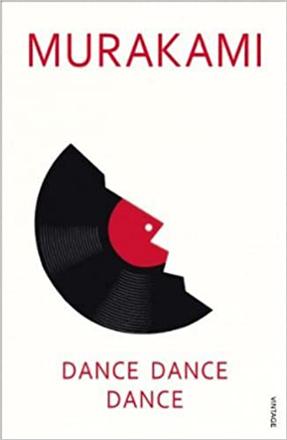You are here
How the past colours the present
Aug 02,2015 - Last updated at Aug 02,2015

Colourless Tsukuru Tazaki and his years of pilgrimage
Haruki Murakami
US: Vintage, 2015
Pp. 314
The pilgrimage referenced in the title of this book is a personal journey towards self-rediscovery. Like in other of Haruki Murakami’s novels, much of the decisive action goes on in the mind of the main characters. However, in this case, the protagonist, Tsukuru Tazaki, does undertake several physical journeys in order to sort out his memories of the past and help him live in the present.
In “Colourless Tsukuru Tazaki”, Murakami does not create a parallel fantasy world as he did in “1Q84” and other novels. Still, another realm is there all the same in the form of dreams and memories that have decisive impact on the feelings and actions of major characters, blurring the boundaries between the conscious and the unconscious. While Tazaki’s daily life and surroundings are quite mundane, not so with his inner world, nor the several sub-plots that in true Murakami fashion inject interesting philosophical and cultural ideas, which may seem extraneous but actually add layers of meaning to the main plot line.
Thirty-six-year-old Tazaki is seemingly a fortunate person. He works at a job he likes and deems useful. He is an engineer who builds and maintains railroad stations, and has no apparent problems, except that he is convinced that he is a boring, colourless person, and that others will perceive him as such: “Because I have no sense of self. I have no personality, no brilliant colour. I have nothing to offer. That’s always been my problem. I feel like an empty vessel. I have a shape, I guess, as a container, but there’s nothing inside.” (p. 273)
This was not always the case. Tazaki was not born with existential self-doubt; nor did he develop it in adolescence. In this sense, Murakami is not telling a coming-of-age story. Or perhaps, it is about a delayed coming-of-age. In high school, Tazaki was one of an intimate circle of five friends who shared common ideals and confided all their thoughts and dreams to each other to the point that they were “locked up inside the perfection of that circle”. (p. 187)
A year after Tazaki left his hometown to study engineering in Tokyo, however, a member of the group called him to say that none of them wanted anything to do with him ever again.
Totally in shock, Tazaki felt powerless to challenge their refusal to even tell him why he was so abruptly expelled from the group. He simply assumed that something was wrong with him. “Alienation and loneliness became a cable that stretched hundreds of kilometres long, pulled to the breaking point by a gigantic winch.” (p. 6)
His first years of pilgrimage were spent coming back to life after that great shock, and coming to terms with his aloneness.
The reader may be amazed at his stoicism, but he let years go by without contacting any of his old friends or questioning their judgment, until meeting a woman whom he really likes. She senses his emotional blockage and prods him to deal with his past if he wants a future with her. This propels Tazaki to seek out his old friends, probe his own emotions and test his new girlfriend’s words: “You can hide memories, but you can’t erase the history that produced them.” (p. 165)
On his new, forward-oriented pilgrimage, Tazaki discovers that his old circle had unravelled in a way he could hardly imagine, a total counternarrative to what he thought had happened. He learns of others’ insecurities and the importance of self-image. Some of the discoveries he makes are not earthshaking but they are vital to him, and Murakami reveals them in a fascinating way. This novel is about the power of friendship and its limits, the loss of youthful idealism and trust, group dynamics gone awry and the cost of broken dreams. Yet it is also about how people recreate hope and go on with and even enrich their lives despite great disappointments.
And, as usual, Murakami raises more questions than he answers.
Related Articles
There is an unusual, haunting love story intertwined with a coming-of-age novel, both infused with elements of myth, science fiction, philosophy and multiple cultural references.
Killing CommendatoreHaruki Murakami Translated from Japanese by Philip Gabriel and Ted GoossenNew York: Alfred A. Knopf, 2018Pp.
Dance Dance DanceHaruki MurakamiTranslated from the Japanese by Alfred BirnbaumLondon: Vintage, 2003, 393 pp This is Murakami’s sixth n



















